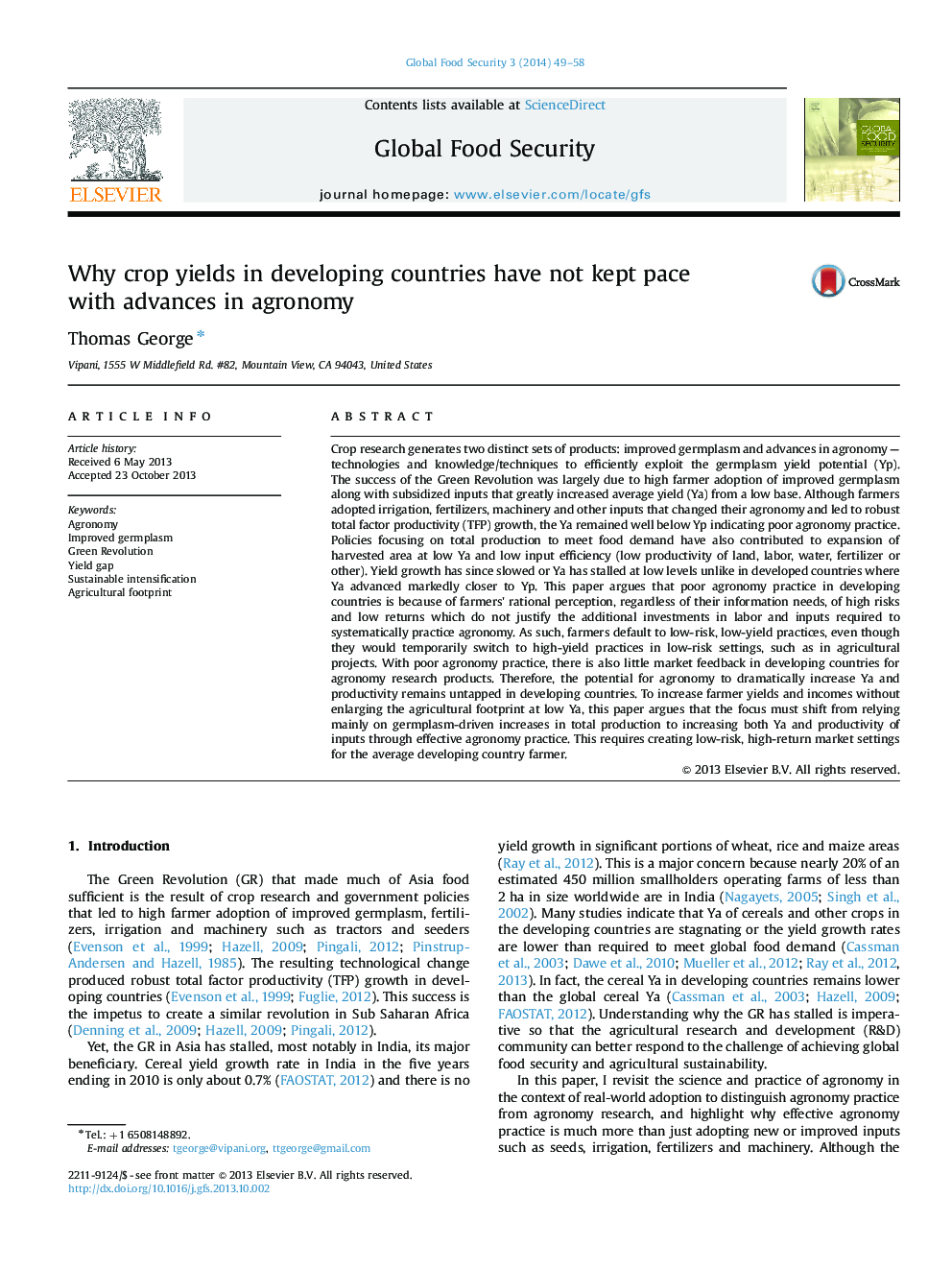| کد مقاله | کد نشریه | سال انتشار | مقاله انگلیسی | نسخه تمام متن |
|---|---|---|---|---|
| 10502307 | 945289 | 2014 | 10 صفحه PDF | دانلود رایگان |
عنوان انگلیسی مقاله ISI
Why crop yields in developing countries have not kept pace with advances in agronomy
ترجمه فارسی عنوان
چرا تولید محصولات کشاورزی در کشورهای در حال توسعه با پیشرفت های زراعت انجام نشده است
دانلود مقاله + سفارش ترجمه
دانلود مقاله ISI انگلیسی
رایگان برای ایرانیان
کلمات کلیدی
زراعت ژرم پلاسم بهبود یافته، انقلاب سبز، شکاف تولید، تشدید پایدار، راندمان کشاورزی،
موضوعات مرتبط
علوم زیستی و بیوفناوری
علوم کشاورزی و بیولوژیک
علوم زراعت و اصلاح نباتات
چکیده انگلیسی
Crop research generates two distinct sets of products: improved germplasm and advances in agronomy - technologies and knowledge/techniques to efficiently exploit the germplasm yield potential (Yp). The success of the Green Revolution was largely due to high farmer adoption of improved germplasm along with subsidized inputs that greatly increased average yield (Ya) from a low base. Although farmers adopted irrigation, fertilizers, machinery and other inputs that changed their agronomy and led to robust total factor productivity (TFP) growth, the Ya remained well below Yp indicating poor agronomy practice. Policies focusing on total production to meet food demand have also contributed to expansion of harvested area at low Ya and low input efficiency (low productivity of land, labor, water, fertilizer or other). Yield growth has since slowed or Ya has stalled at low levels unlike in developed countries where Ya advanced markedly closer to Yp. This paper argues that poor agronomy practice in developing countries is because of farmers' rational perception, regardless of their information needs, of high risks and low returns which do not justify the additional investments in labor and inputs required to systematically practice agronomy. As such, farmers default to low-risk, low-yield practices, even though they would temporarily switch to high-yield practices in low-risk settings, such as in agricultural projects. With poor agronomy practice, there is also little market feedback in developing countries for agronomy research products. Therefore, the potential for agronomy to dramatically increase Ya and productivity remains untapped in developing countries. To increase farmer yields and incomes without enlarging the agricultural footprint at low Ya, this paper argues that the focus must shift from relying mainly on germplasm-driven increases in total production to increasing both Ya and productivity of inputs through effective agronomy practice. This requires creating low-risk, high-return market settings for the average developing country farmer.
ناشر
Database: Elsevier - ScienceDirect (ساینس دایرکت)
Journal: Global Food Security - Volume 3, Issue 1, February 2014, Pages 49-58
Journal: Global Food Security - Volume 3, Issue 1, February 2014, Pages 49-58
نویسندگان
Thomas George,
